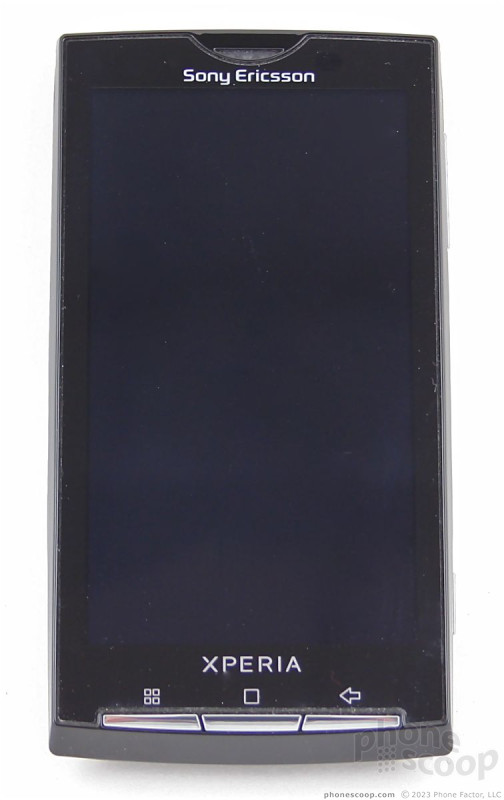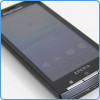Review: Sony Ericsson Xperia X10
Slab-style Android phones are becoming increasingly difficult to tell apart. There's not much designers can do with the limitations introduced by the large screen size and required set of buttons. That's not to say they can't have at least a little personality. The X10 feels great in the hand mainly because of the rounded side edges of the device. The soft-touch paint job helps, too. The combination of these two creates a handset that feels comfortable to use and pleasant as it rests against your skin; there are no sharp angles jabbing you. The weight is also just right. It's hefty enough to give it a feeling of quality without being too heavy.
There are just three physical buttons on the front of the X10: Menu, Home and Back. Why Sony Ericsson decided to leave off the search key is a puzzler. I like that key and use it all the time on other Android handsets. The three keys are way down at the bottom of the X10, but are easily found. They are dashes lined in a row, and covered with a slippery, silvery finish. Travel and feedback was a little bit on the mushy side, but you can at least tell that you've pressed the buttons.
There are no buttons or controls on the left side of the phone nor the bottom. The top of the X10 hosts several controls, including the power/lock button, microUSB port, and 3.5mm headset jack for use with most stereo headphones. I like that the headset jack is on the top, which makes it easier to listen to music with the phone in your pocket. The hatch covering the microUSB can be tricky to remove if you clip your nails short as I do. Given how often you'll be using the power/lock key, I am glad that Sony Ericsson made the button easy to find and satisfying to use. It has good travel and feedback.
The volume toggle and dedicated camera button are both found on the right side of the phone. The volume toggle is situated closer to the top of the X10, right where your thumb expects to find it. It is a sharp-edged toggle that has very good travel and feedback. One thing you might notice: positioned directly under the volume toggle is the magnifying glass normally associated with the search key. The only problem is that there appears to be no way to use the volume toggle as the replacement search key. Try as I might, I couldn't get it to work. Odd.
Closer to the bottom edge is where the two-stage camera button rests. The X10 has perhaps the best camera button I've used on a phone. Both stages are clearly defined and require deliberate pressure to use. You won't be firing off any accidental shots with the X10. You have to want to take a picture. I like that.
The microSD port is located under the battery cover and abuts the battery. The microSD card cannot be removed without first removing that battery. That's a pain in the neck. Then, the X10 is comes packed with a meager 2GB microSD card. Why so stingy, AT&T? AT&T is packing 16GB cards with other phones, which makes the 2GB card with the X10 all the more insulting.











 Video Tour: Sony Ericsson Xperia X10
Video Tour: Sony Ericsson Xperia X10
 Samsung S24 Series Adds More AI, Updates the Hardware
Samsung S24 Series Adds More AI, Updates the Hardware
 Samsung Puts its Best Camera Yet in the Galaxy S23 Ultra
Samsung Puts its Best Camera Yet in the Galaxy S23 Ultra
 Sony Ericsson Xperia X10
Sony Ericsson Xperia X10








